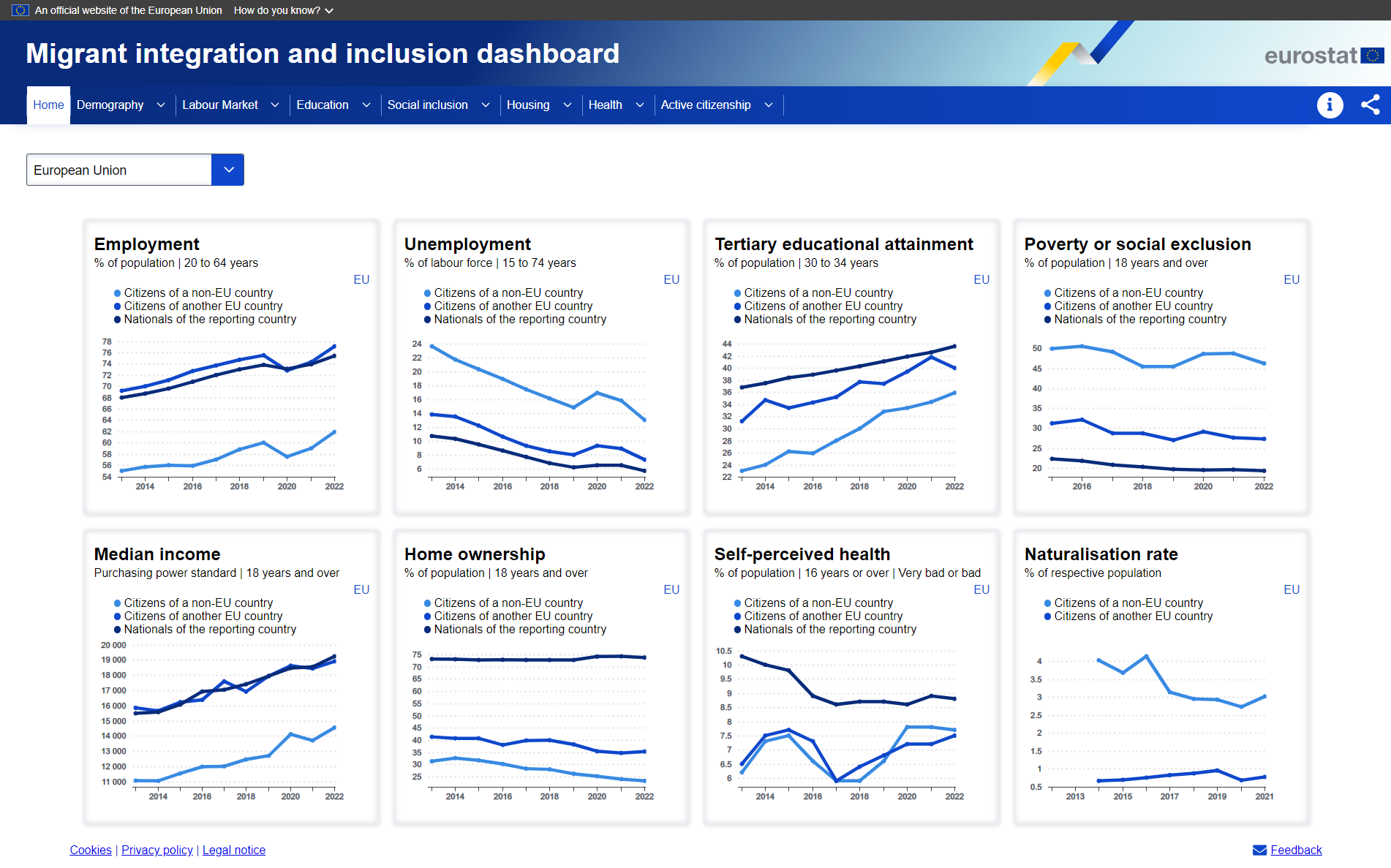Migrant integration and inclusion indicators visualised

Today, Eurostat launched the Migrant integration and inclusion dashboard. This interactive visualisation tool offers a comprehensive overview of data related to demography, the labour market, education, social inclusion, housing, health and active citizenship of the migrant population in the EU.
The tool enables users to track and visualise more than 30 indicators that assess progress in integration and inclusion, in line with the EU ‘Zaragoza’ declaration on integration and the principles of the action plan on integration and inclusion 2021-2027. The data is presented for the EU, its members and EFTA countries, and it can be displayed based on country of citizenship or country of birth.
Users can tailor the interactive visualisation to suit their preferences with a range of features. The dashboard enables users to:
- Select and customize their choice of country/countries and the timeframe to be presented.
- Choose an interactive line or dot plot chart.
- Showcase indicators with different breakdowns.
- Download the generated charts.
- Access the underlying source datasets in the Eurostat database via the links below each visualisation.
- Explore related information through our Statistics Explained articles.
- Share the tool on social media.
The visualisation is updated automatically when new or revised data become available in the Eurostat database, thus always showing the most up-to-date data.
Today, we are also releasing a new interactive publication Migration and asylum in Europe that allows the user to look into selected statistics focusing on population diversity, protection and asylum, irregular migration and returns, and skills of migrants.
To discover more about migrants, take a look at the two new Eurostat products!
For more information
- Migrant integration and inclusion dashboard
- Migration and asylum in Europe – 2023 interactive publication
- Thematic section on migrant integration
- Thematic section on migration and asylum statistics
- Database on migrant integration
- Database on international migration, citizenship
- DG Migration and Home Affairs – Integration
Methodological notes
For the purpose of presenting statistics on migrant integration and in this migration integration and inclusion dashboard, two different concepts are used to define migrant population: the concept of country of citizenship and the concept of country of birth.
For the concept of country of citizenship, the population is divided into the following groups:
Nationals: the citizens of the reporting country
- Citizens of an EU country other than the reporting country (e.g. a person with a German citizenship residing in France)
- Citizens of a non-EU country.
For the concept of country of birth, the population is divided into the following groups:
- Native-born: the population born in the reporting country
- Born in an EU country other than the reporting country (e.g. a person born in Germany residing in France)
- Born in a non-EU country: the population born outside the EU.
If you have any queries, please visit our contact us page.

